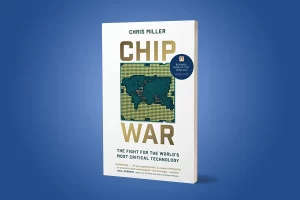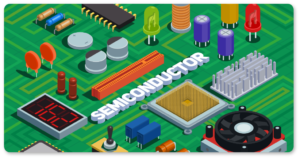Introduction
The semiconductor revolution has reshaped the world in ways unimaginable, powering the digital age and transforming every aspect of our lives. From smartphones to satellites, from medical devices to transportation systems, semiconductors are the silent heroes behind the scenes. To delve deeper into this fascinating realm, we present a curated list of 5 Must-Read books that offer invaluable insights into the history, science, and future prospects of semiconductors.
Follow us on Linkedin for everything around Semiconductors & AI
“Makers of the Microchip: A Documentary History of Fairchild Semiconductor” by Christophe Lécuyer
“Makers of the Microchip: A Documentary History of Fairchild Semiconductor” by Christophe Lécuyer and David C. Brock dives into the early days of Fairchild Semiconductor, the company that developed the foundational technology for the modern digital world: the microchip.
Here’s a breakdown of the book’s focus:
Fairchild’s Pioneering Role: The book explores the first three and a half years of Fairchild, a period where they not only invented the microchip but also established the model for successful Silicon Valley startups. This model emphasized intense collaboration, a focus on rapid market entry (their first product launched within 10 months), and a venture capital-backed approach.
Rise of Silicon Valley: Lécuyer and Brock explain how Fairchild’s success story fueled the growth of venture capitalism in the San Francisco Bay Area. This financial model would play a critical role in the subsequent boom of Silicon Valley.
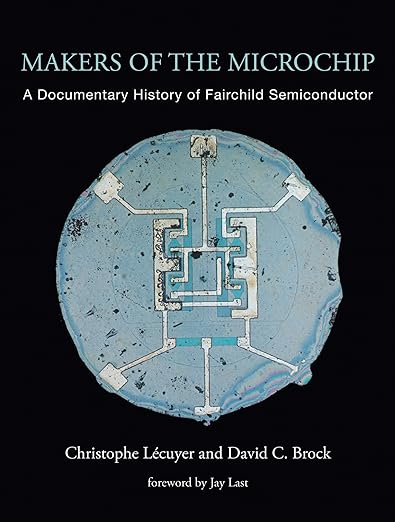
Buy the book here
Behind the Innovation: The book goes beyond just a historical narrative. It delves into the technical aspects of semiconductor technology during that era. This provides context for the groundbreaking work happening at Fairchild.
Primary Source Exploration: “Makers of the Microchip” isn’t just a traditional history book. The authors incorporate reproductions of various primary documents. This includes the company’s first prospectus, sketches and plans for products, and even a notebook kept by a co-founder that details discussions from weekly meetings. These documents offer a unique glimpse into the inner workings and thought processes of the Fairchild team.
Overall, this book offers a comprehensive look at Fairchild Semiconductor’s pivotal role in technological advancements and the birth of the Silicon Valley model we recognize today.
Read More: China Bans Intel and AMD From Government Computers
“The Chip: How Two Americans Invented the Microchip and Launched a Revolution” by T.R. Reid
“The Chip: How Two Americans Invented the Microchip and Launched a Revolution” by T.R. Reid chronicles the invention of the microchip and its far-reaching impact.
Here’s a breakdown of what the book explores:
The Inventors and the Problem: Reid dives into the story of Jack Kilby and Robert Noyce, the ingenious minds behind the microchip invention. The book explores the challenges faced in the 1950s with bulky and expensive computers. These large machines, limited to research facilities, were hindering technological progress.
The Birth of the Microchip: The book recounts how Kilby and Noyce independently invented the integrated circuit, also called the microchip, almost at the same time.
A Technological Revolution: Reid goes beyond the invention itself. He delves into how the microchip transformed multiple industries. This enabled smaller computers and calculators, and ultimately shaping the digital era we inhabit today.
Global Repercussions: The book explores how the invention of the microchip had a global impact.
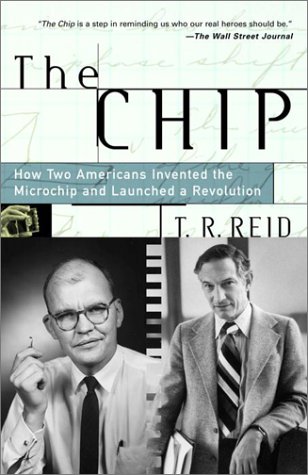
Buy the book here
Focus on the Inventors: Compared to “Makers of the Microchip,” which delves into the company Fairchild Semiconductor, Reid’s book places greater emphasis on the individual inventors, Kilby and Noyce.
Readability: “The Chip” is known for its engaging and accessible writing style. This makes it a good choice for readers who may not have a strong technical background.
Recognition of Achievement: The book also highlights the delayed recognition Kilby received for his invention. While Noyce co-founded Intel, a company that greatly benefited from the microchip, it was Kilby who ultimately won the Nobel Prize in Physics for his groundbreaking work.
Read More: UK’s First 300mm Wafer Fab: Giant Chip Factory for Ultra-Thin Flex ICs – techovedas
“Revolution in Miniature: The History and Impact of Semiconductor Electronics” by Ernest Braun and Stuart Macdonald
“Revolution in Miniature: The History and Impact of Semiconductor Electronics” by Ernest Braun and Stuart Macdonald takes a slightly different approach to the story of semiconductors compared to the two books .
Here’s what you can expect:
- Broader Perspective: This book doesn’t solely focus on the invention or a specific company. Instead, it provides a wider historical context for the development and impact of semiconductor electronics.
- Technical Details (Approachable): While the book explores the technical aspects of semiconductors, the authors make an effort to present the information in a way that’s understandable even for readers without a strong technical background.
- Social and Economic Impact: “Revolution in Miniature” goes beyond just the technological advancements. It explores the social and economic consequences of the rise of semiconductor electronics. The book raises questions about the future implications of this powerful technology.
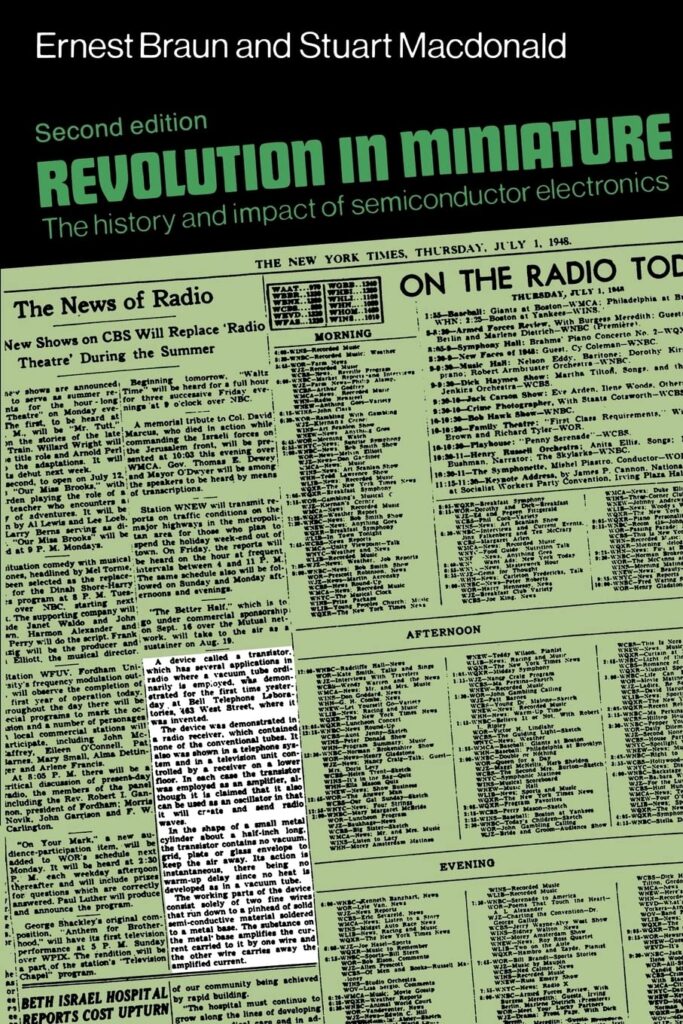
Buy the book here
Here are some additional things to consider:
- Publication Date: The book was originally published in 1978 and then revised and updated in a later edition. While it provides valuable historical context, it might not cover the latest advancements in semiconductor technology.
- Target Audience: The book is designed for a general audience interested in understanding the foundation of modern technology and the forces that drive innovation.
Overall, “Revolution in Miniature” offers a well-rounded exploration of the history and impact of semiconductor electronics. The book provides a broader social and economic context for this transformative technology.
Read More: HBM3e: AI’s Memory Marvel or Hype? Truth Behind SK hynix’s Game-Changer
“The Intel Trinity: How Robert Noyce, Gordon Moore, and Andy Grove Built the World’s Most Important Company” by Michael S. Malone
“The Intel Trinity: How Robert Noyce, Gordon Moore, and Andy Grove Built the World’s Most Important Company” by Michael S. Malone delves into the history of Intel through the lives of three key figures: Robert Noyce, Gordon Moore, and Andy Grove. Here’s a breakdown of what you can expect:
Central Focus:
- The “Trinity”: The book centers around these three individuals and their unique contributions to Intel’s success. Noyce provided credibility and funding, Moore spearheaded technological innovation, and Grove drove the company towards relentless growth and competitiveness.
- Intel’s Rise to Prominence: Malone explores how these three individuals, with their complementary strengths, propelled Intel to become a dominant force in the tech industry.
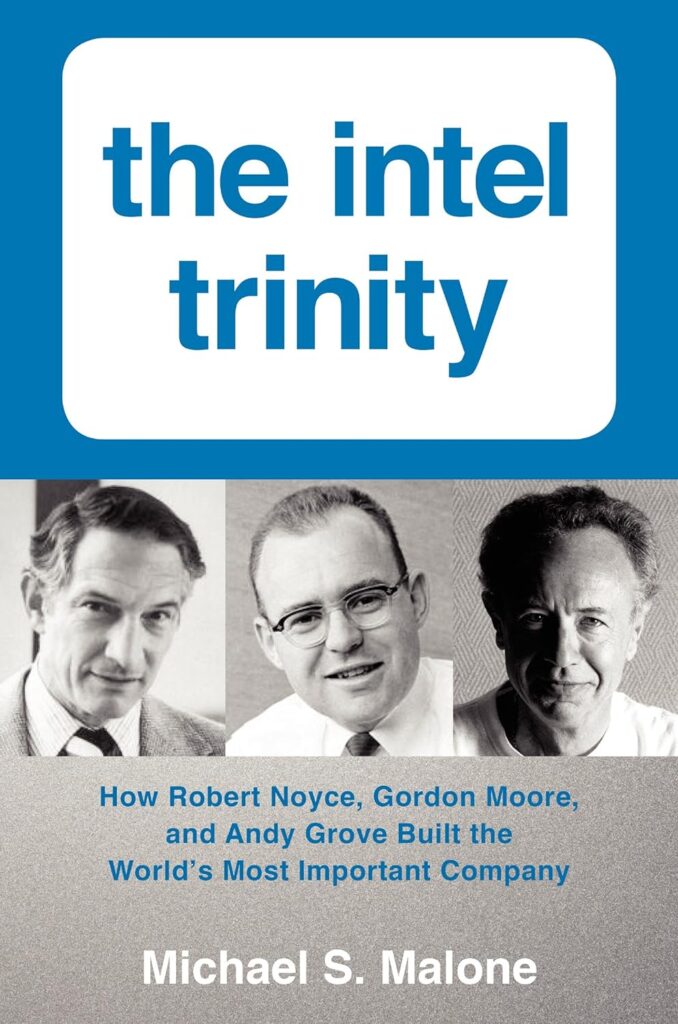
Read the book here
Additional Insights:
- Beyond Invention: While the book acknowledges the importance of the microprocessor (invented at Fairchild Semiconductor by Noyce), it goes beyond just technical innovations. It explores Intel’s business strategies, corporate culture, and the challenges they faced along the way.
- Impact on Technology Landscape: The book explores how Intel’s advancements with microprocessors played a crucial role in enabling the personal computer revolution, the internet, and advancements in telecommunications and personal electronics.
- Future Challenges: While celebrating Intel’s success, Malone doesn’t shy away from discussing the challenges the company might face in the future. This includes maintaining its dominance and adapting to a changing technological landscape.
Some additional points to consider:
- Unique Perspective: Gaining unprecedented access to Intel’s archives, Malone provides a detailed and insightful look at the company’s history.
- Focus on Personalities: The book delves into the personalities, strengths, and weaknesses of each member of the “Trinity,” offering a richer understanding of their contributions.
If you’re interested in the story of Intel, the key figures who shaped it, and its impact on the technological revolution, “The Intel Trinity” is a compelling read.
Read More: 8 Reasons Why You Must Read The Intel Trinity
“Fabless: The Transformation of the Semiconductor Industry” by Daniel Nenni & Paul McLellan
“Fabless: The Transformation of the Semiconductor Industry” by Daniel Nenni and Paul McLellan dives into the rise of the fabless business model and its impact on the entire semiconductor industry.
Here’s what you can expect from the book:
- Focus on the Fabless Model: This book specifically explores the fabless model. Fabless model is where companies design and develop semiconductors but outsource the actual manufacturing (fabrication) process to specialized foundries like TSMC.
- Industry Transformation: The book argues that the rise of the fabless model was a major factor in the explosive growth of the semiconductor industry since the mid-1980s. It analyzes the economic and business advantages that the fabless model brought to the table.
- Evolution of the Ecosystem: “Fabless” goes beyond just a historical account. It explores the evolution of the entire semiconductor ecosystem, including the role of design houses, intellectual property (IP) vendors, and foundries.
- Industry Insider Perspective: The authors, with extensive experience in the semiconductor industry, offer valuable insights and first-hand perspectives on the trends and challenges that shaped the fabless model’s success.
- Industry Leaders’ Contributions: The book includes contributions from key figures in the industry. This provides a richer understanding of the decision-making and thought processes behind the rise of fabless companies.
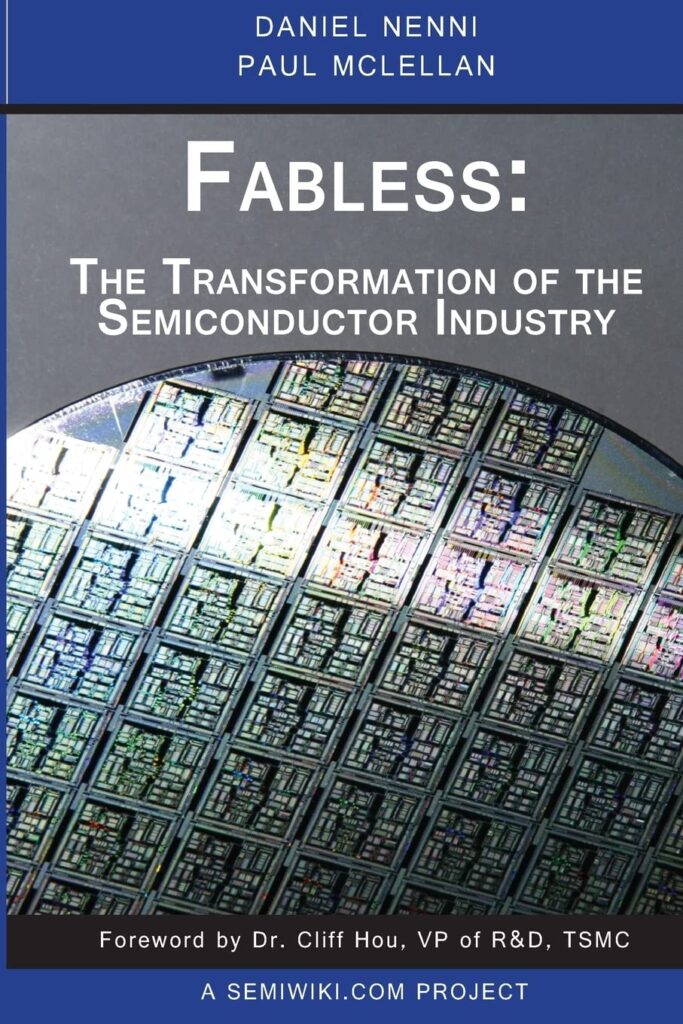
Here are some additional things to consider:
- Publication Date: Originally published in 2014 with a revised edition in 2019, the book offers a solid historical perspective but may not cover the absolute latest developments in the industry.
- Target Audience: This book is geared towards readers with a general understanding of the semiconductor industry. While it delves into some technical aspects, the focus remains on the business and economic implications of the fabless model.
Overall, “Fabless: The Transformation of the Semiconductor Industry” offers a valuable perspective on how the fabless business model reshaped the landscape of the semiconductor industry, leading to the semiconductor revolution we experience today.
Read the book here
Read more 80% Production Restored and No Impact on EUV: Earthquake Barely Bruises TSMC – techovedas
Conclusion
In conclusion, these five books offer a captivating glimpse into the history, technology, and personalities behind the semiconductor revolution.
Whether you’re a seasoned technologist, a budding entrepreneur, or simply curious about the forces that have shaped our digital age, exploring these books will undoubtedly enrich your understanding of this remarkable journey.
So, pick up a copy, dive in, and embark on a fascinating exploration of semiconductor- one of the most consequential revolution in human history.


